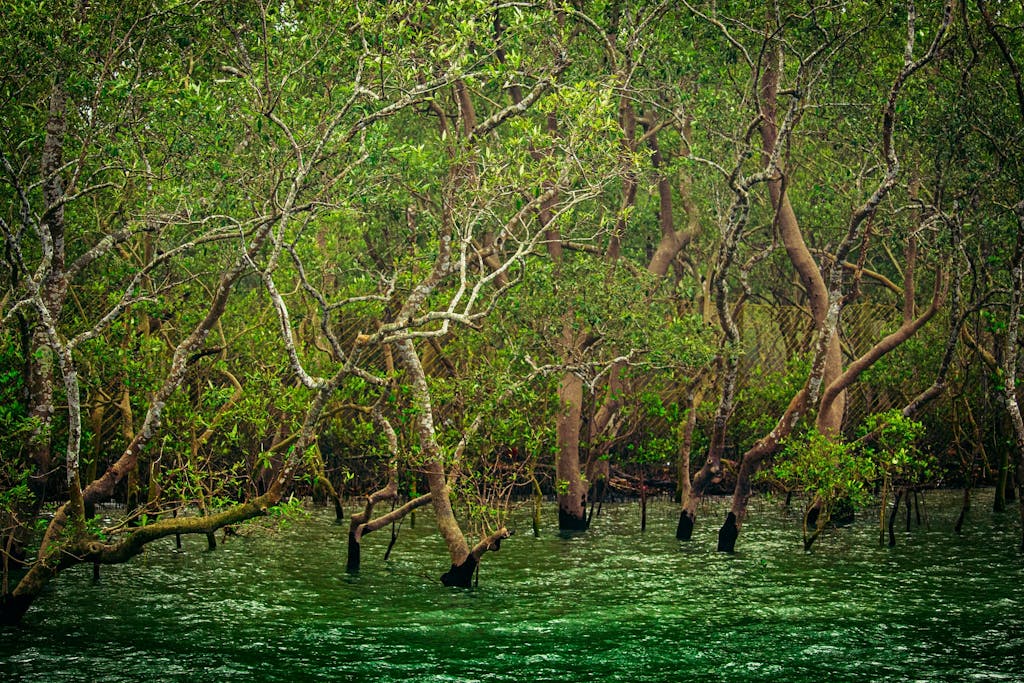This blog was co-authored by: Susan Ruffo, Senior Adviser for Ocean and Climate, UN Foundation; Justin Kenney, Senior Adviser for Ocean and Climate, UN Foundation; Anna-Marie Laura, Director, Climate Policy, Ocean Conservancy; and Luis Estévez-Salmerón, Senior Manager, International Government Relations, Ocean Conservancy.
Almost three-quarters of Earth’s surface is covered by ocean. World leaders seeking to confront the climate crisis should understand that the ocean is being damaged by climate change – but it can also play a considerable part in delivering the solutions we need.
According to the Intergovernmental Panel on Climate Change (IPCC) Special Report on the Ocean and Cryosphere in a Changing Climate, the ocean has absorbed more than 90% of the excess heat in the climate system and since the 1980s has taken in 20-30% of human-induced carbon dioxide emissions. While the ocean may look the same as it always has, under the surface it is getting warmer, more acidic, and less productive.
But the ocean is much more than a victim of climate change — it is also a critical part of the solution. A report commissioned by the High-Level Panel for a Sustainable Ocean Economy found that by 2050 ocean solutions could contribute as much as one-fifth of the annual greenhouse gas (GHG) emission cuts needed to limit global temperature rise to 1.5°C. At the same time, these ocean-based solutions can create jobs, sustain livelihoods and communities, and lead to a healthier ocean.
What are ocean-based climate solutions? Of course, they reduce GHG emissions and increase the resilience of people and nature in the face of climate impacts we cannot stop. But ocean-based climate solutions are not just land-based solutions applied to the ocean. They can, and must, be designed for ocean and coastal communities, ecosystems, and sectors and implemented with consideration for the unique governance, environmental conditions, and natural resources found in the ocean. Thinking about issues like energy production or transportation with an ocean perspective can ensure that the solutions developed will provide as many benefits as the ocean itself — protecting food and livelihoods, generating economic growth, and conserving some of the most wonderous places on the planet — all while delivering climate benefits.
This is not some futuristic dream. We can deploy ocean-based climate solutions now to help us keep within sight of the goal of limiting global warming to 1.5ºC and keep our ocean and coastal communities thriving. Countries around the world have already created replicable and scalable examples. The United States, with its vast and diverse ocean and coastal ecosystems, can also be a champion on these issues as it seeks to step back up to a position of global climate leadership.

Ocean-based clean energy
From offshore wind to wave and tidal energy, the ocean is an abundant source of renewable power, and we have the technologies to tap into it. Development, however, must be done responsibly, considering fishing, fragile ecosystems, and other ocean priorities. The United Kingdom, the world’s largest offshore wind energy producer, has committed to generate over 30% of its electricity from offshore wind by 2030. And recently, the U.S. committed to power more than 10 million homes with offshore wind, enough to cut 78 million tons of carbon dioxide (CO2). If countries are committed to well-planned and responsibly developed ocean-based renewable energy, it could provide one-tenth of global electricity demand and save over 3 billion tons of CO2 annually while also helping coastal communities to thrive.
Clean marine transport
Marine transportation from cargo ships to local ferries emits nearly 3% of global GHG emissions, including black carbon, while related ports and facilities produce air pollution that negatively affects historically marginalized and overburdened port communities. This sector is ripe for innovation and ambition with such opportunities as transitioning to low or zero carbon fuels, slow steaming, improving energy efficiency or wind-assisted propulsion, renewable power when in port, and more.
Some of the world’s largest ocean states, such as the Marshall Islands and the Solomon Islands, are putting forth innovative proposals, such as a carbon price on shipping, that could accelerate the adoption of zero carbon fuels while supporting research and development and climate adaptation for vulnerable nations. Reducing both international and domestic emissions in marine transport can mitigate anywhere from 500 million to 1.8 billion tons of carbon dioxide between 2030 and 2050. It could also support energy breakthroughs in other sectors, improve air quality for port communities, and create jobs.
Nature-based climate mitigation
Coastal wetlands such as mangrove forests, salt marshes, and seagrass beds can sequester three to five times as much carbon as tropical forests if protected appropriately, while also serving as buffers from storms and storage areas for floodwaters. Thanks to meticulous research, the IPCC has adopted methodologies for measuring how protecting these places can contribute to countries’ commitments to reduce emissions while also generating other benefits. Recognizing this, as part of its updated nationally determined contribution (NDC) to the Paris Agreement, Costa Rica pledged to protect 100% of its coastal wetlands by 2025, contributing to emissions reductions while ensuring the continuation of other critical functions such as maintaining water quality and reducing erosion. If the 151 countries that have at least one so-called blue carbon ecosystem did the same, emissions reductions could roughly equal all of South Korea’s emissions.

In addition to its potential to reduce GHG emissions, the ocean has an indispensable role to play in ensuring all life on Earth is resilient in the face of the climate change impacts we are already experiencing. We can actively build up this resilience by, for example, managing fisheries for the impacts of climate change, or ensuring that critical marine protected areas are designed with climate impacts in mind and can protect species as they are forced to move inland or to cooler waters. In this way, protecting 30% of our ocean will continue to help us and nature weather the impacts of climate change that are already in motion.
Of the 40 coastal countries that submitted or updated their NDCs in 2020, 37 of them included ocean-based climate solutions. Costa Rica, Fiji, Chile, and Cabo Verde are among those leading the way, making ambitious commitments to invest in blue carbon, decarbonize shipping, and prioritize expanding protected areas. Addressing the climate crisis is our most urgent collective priority. Ocean-based climate actions are a critical part of the solution that are right in front of us and ready to go.
Featured Image: Nicholas Doherty/ Unsplash



 View All Blog Posts
View All Blog Posts


